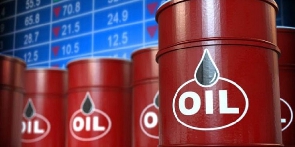Crude oil prices increased as the market priced in the lifting of the US debt ceiling, despite market uncertainty ahead of the much-anticipated OPEC+ meeting, which is widely expected to yield an unchanged production policy.
International benchmark Brent crude traded at $75.08 per barrel, representing a 1.07% increase from the closing price of $74.28 a barrel in the previous trading session on Friday.
The American benchmark West Texas Intermediate (WTI) traded at the same time at $70.82 per barrel, up 1.02% from the previous session’s close of $70.10 per barrel.
Both benchmarks are on track to slash their marginal weekly losses after investors throughout the week priced in the US debt ceiling decision to set the maximum amount of outstanding federal debt the US government can incur.
Averting a first-ever catastrophic default on the nation’s debt before a June 5 deadline, the US Senate passed a bill to suspend the debt ceiling late Thursday.
This came as the US Institute for Supply Management (ISM) released the ISM manufacturing purchasing managers’ index (PMI), which indicated a contraction in the country’s manufacturing sector in May for the seventh consecutive month, limiting crude oil prices’ upward trajectory.
Another headwind to limit price upticks was the less-than-expected rise in US commercial crude oil inventories, which rose by around 4.5 million barrels to 459.7 million barrels, against the American Petroleum Institute’s forecast of a jump of 5.2 million barrels.
Positive demand sentiment in the market was supported by reports that manufacturing activity in China recovered for the first time in three months in May. The Caixin China General Manufacturing Purchasing Managers’ Index (PMI) increased to 50.9 in May from 49.5 in April, owing to robust and rapid growth in output in May.
With a rise above the neutral level of 50, the result marked the first improvement in overall manufacturing sector conditions since February.
OPEC+ meeting in focus
As markets await Sunday’s meeting of the Organization of Petroleum Exporting Countries (OPEC) and its allies, known as OPEC+, experts say the group will most probably keep its production level unchanged.
Rystad Energy on Thursday said the 23-member group could decide to maintain the current production policy, citing tight market conditions expected to lead to higher oil prices in the second half of the year.
The meeting will be the group’s first ministerial meeting after some OPEC+ countries in April decided to cut output by 1.6 million barrels per day (bpd) on top of their existing cuts of 2 million bpd in place since October last year.
Without ruling out ‘further production cuts’, Jorge Leon, senior vice president of oil market research at Rystad Energy, predicted that the group might stick to current production levels, taking a ‘wait and see’ approach.
Business News of Saturday, 3 June 2023
Source: dmarketforces.com

















